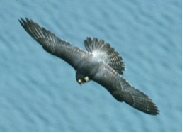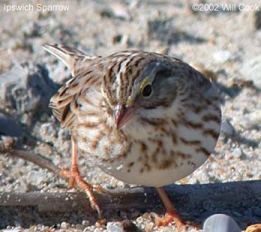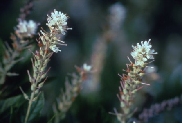|
Species at Risk
in NS | Status Assessments |
Status Definitions
Species at Risk in Nova
Scotia
In Nova Scotia there are
31 species at risk and 11 marine species at risk. Species are
assessed and listed as 'at risk' through both a
national process and a provincial process. Species listed
through the provincial process are then protected under the
NS Endangered Species Act.
Click on taxonomic
group to jump down the page to the list of species. Then click on
the species image to view a larger photo and additional
information on the species.
Species at Risk in NS and
Their Status
Please see the section below "Species
Status Assessment" for an explanation of National and Provincial
Status categories and "Status Definitions"
section for definitions of Endangered, Threatened, and
Special Concern (Vulnerable).
|
MAMMALS |
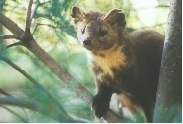 |
American Marten (Cape
Breton Population)
(Martes americana)
National Status - not listed
Provincial Status - Endangered |
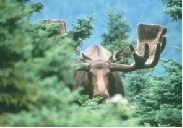 |
Moose
(Mainland
Population) (Alces
alces americana)
National Status - not listed
Provincial Status - Endangered |
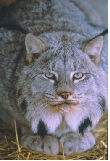 |
Canada Lynx
(Lynx canadensis)
National Status - not listed
Provincial Status - Endangered |
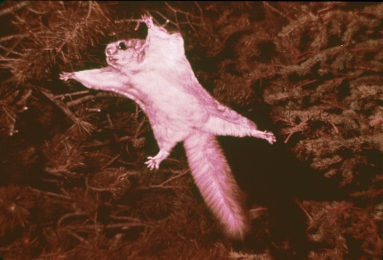 |
Southern Flying Squirrel
(Glaucomys volans)
National Status - Special Concern
Provincial Status - not listed |
 |
Gaspe Shrew (Sorex
gaspensis)
National Status - Special Concern
Provincial Status - not listed |
Top of Page
Top of Page
|
REPTILES |
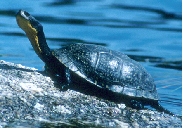 |
Blanding's Turtle
(Emydoidea
blandingii)
National Status - Threatened
Provincial Status - Endangered |
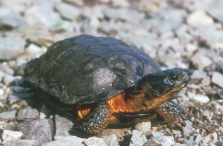 |
Wood Turtle
(Clemmys
insculpta)
National Status - Special Concern
Provincial Status - Vulnerable |
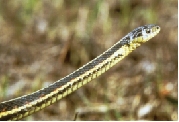 |
Eastern Ribbonsnake
(Thamnophis
sauritus)
National Status - Threatened
Provincial Status - Threatened |
Top of Page
|
FISH |
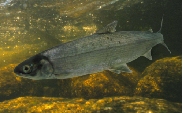 |
Atlantic Whitefish (Coregonus
canadensis)
National Status - Endangered
Provincial Status - Endangered |
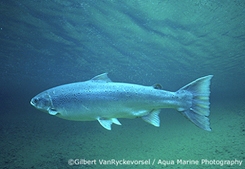 |
Atlantic Salmon
(Inner Bay of Fundy
Population) (Salmo
salar)
National Status - Endangered
Provincial Status - not listed |
Top of Page
Top of Page
|
LICHENS |
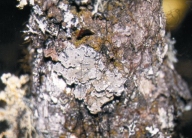 |
Boreal Felt Lichen
(Erioderma pedicullatum)
National Status - Endangered
Provincial Status - Endangered |
Top of Page
|
MOLLUSCS |
 |
Yellow Lampmussel
(Lampsilis cariosa)
National Status - Special Concern
Provincial Status - not listed |
Top of Page
Species Status Assessments
The status of species are
determined through both a provincial and national status assessment process.
These processes identify which species are at risk of extinction and are
thus in need of conservation and recovery efforts.
National Status - Species at Risk category assessed and assigned by
COSEWIC. Species will be listed and protected under the federal
Species at Risk Act (SARA) and is legally protected. Within the
national process species assessments are considered within a national
context.
Provincial Status - Species at Risk category assessed and assigned
by the NS Species at Risk Working Group, with provincial-level
considerations taken into account. Once a species is assigned a
category it is listed under the NS Endangered Species Act and is legally
protected.
There is also a provincial General Status Assessment process which
provides a first alert tool for identifying species that are potentially
at risk in the province, as well as an International process. The table below summarizes the different
types of status and assessment processes.
|
Jurisdiction |
Legal Basis |
Assessment Body |
Species at Risk
Categories1 |
|
Provincial |
Yes:
NS Endangered Species Act (NS ESA) |
NS Species
at Risk Working Group |
Endangered
Threatened
Vulnerable |
|
National |
Yes:
Species at Risk Act (SARA) |
Committee
on the Status of Endangered Wildlife in Canada (COSEWIC) |
Endangered
Threatened
Special Concern |
|
Provincial
(General Status)
|
No, But:
Must be considered in NS Environmental Impact Assessments |
NS
Department of Natural Resources & wildlife biologists |
Red
Yellow
Green
Grey |
International
(Global Rank or
G-Rank) |
No |
Natural
Heritage Programs and Conservation Data Centers |
G1
G2
G3
G4
G5 |
International
(Sub-national
Rank or S-Rank) |
No |
Natural
Heritage Programs and Conservation Data Centers |
S1
S2
S3
S4
S5 |
1See
definitions of Species at Risk categories below.
Top of Page
Definition of Species at Risk Categories
Provincial Legal Status:
Species listed as at risk by
the NS Species at Risk
Working Group are approved by the responsible minister and are included on
the list of species at risk in NS and are then protected under the
provincial NS Endangered Species Act.
The NS Species at Risk Working Group status is assigned based on an
assessment of biological factors and rigorous assessment criteria,
followed by classification into categories based on level of risk.
Status categories are as follows:
-
Endangered
-
a species facing imminent extirpation or extinction.
-
Threatened
-
a species likely to become endangered
if limiting factors are not reversed.
-
Vulnerable - a species of special concern because
of characteristics that make it particularly sensitive to human
activities or natural events.
Top of Page
National Legal Status:
Species listed as at risk by
COSEWIC (Committee
on the Status of Endangered Wildlife in Canada)
are
approved by the appropriate minister and are included on the Schedule 1
which means they are protected under the national Species at Risk Act
(SARA).
The COSEWIC status is assigned based on an assessment of biological
factors and rigorous assessment criteria, followed by classification into
categories based on level of risk. Status categories are as
follows:
-
Endangered
-
a species facing imminent extirpation or extinction.
-
Threatened
-
a species likely to become endangered
if limiting factors are not reversed.
-
Special Concern -
(formerly “vulnerable”) a species of special concern
because of characteristics that make it particularly sensitive to human
activities or natural events.
Top of Page
Provincial General Status Rankings:
The Nova Scotia General
Status Rankings are based on a set of criteria that are evaluated by a
group of scientists and wildlife experts. NS General Status ranks are as
follows:
-
Red
- any species known to
be, or believed to be, at risk.
-
Yellow
- any species known to
be, or believed to be, particularly sensitive to human activities or
natural events.
-
Green
- any
species known to be, or believed to be, not at risk.
-
Grey
-
Indeterminate species,
insufficient information to determine status
Top of Page
International
Global Ranks (G-Rank)
A standardised element ranking system that has evolved over 23 years with
input from hundreds of scientists is used by the Nature Conservancy and
the Conservation Data Centres. The ranks are assigned by committees of
experts, the Conservation Data Centre and provincial biologists.
-
G1
- Critically imperiled
globally because of extreme rarity (5 or fewer occurrences or less than
1000 individuals) or because of extreme vulnerability to extinction due
to some natural or man-made factor.
-
G2
- Imperiled globally
because of rarity (6 to 20 occurrences or less than 3000 individual) or
because of vulnerability to extinction due to some natural or man-made
factor.
-
G3
- Either very rare and
local throughout its range (21 to 100 occurrences or less than 10,000
individuals) or locally in a restricted range or vulnerable to
extinction from other factors.
-
G4
- Apparently secure
globally (may be rare in parts of its range).
-
G5
- Demonstrably secure
globally.
Top of Page
International
Sub-national (S-Rank):
-
S1
- Extremely rare
throughout its range in the province (typically 5 or fewer occurrences
or very few remaining individuals). May be especially vulnerable to
extirpation.
-
S2
- Rare throughout its
range in the province (6 to 20 occurrences or few remaining
individuals). May be vulnerable to extirpation due to rarity or other
factors.
-
S3
- Uncommon throughout
its range in the province, or found only in a restricted range, even if
abundant in at some locations. (21 to 100 occurrences).
-
S4
- Usually widespread,
fairly common throughout its range in the province, and apparently
secure with many occurrences, but the Element is of long-term concern
(e.g. watch list). (100+occurrences).
-
S5
- Demonstrably
widespread, abundant, and secure throughout its range in the province,
and essentially ineradicable under present conditions.
Top of Page
|



